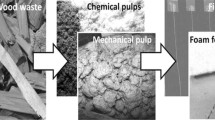Abstract
The reclamation of resources from wastes, through such activities as recycling various kinds of wastes and finding more ways to use them, is an important part of changing to a sustainable society. It is also important to ensure the safety of products by, for example, removing hazardous substances from recycled items. Wood is a type of demolition waste. The reuse and recycling of wood from demolition have not progressed much. To increase the number of ways of using wood wastes we have examined methods of making carbonized materials from them and using these carbonized materials to control indoor air pollution (Shibano et al., 2002). Research currently underway on ensuring the safety of recycled items includes investigating the behavior and other characteristics of hazardous substances that are, or may very well be, found in recycled items. It is known that the smoke arising from the process of carbonizing wood wastes is mutagenic. However, such mutagenic components become smoke and separate from carbonized materials, and, especially at temperatures of 800°C and higher, they hardly remain in carbonized materials at all (Nakajima et al., 2003, 2004). In the carbonization of wood wastes containing hazardous metals such as CCA (Cr, Cu, As)-treated wood, substances that readily vaporize separate from the carbonized materials. One cannot expect, however, the same removal effect on metals that vaporize with difficulty, such as Cu, making it likely that they remain in the carbonized material (Takahashi et al., 2004). To examine methods of removing hazardous metals which may well remain in carbonized wood wastes, we investigated the removal and recovery of copper from charcoal with a high copper content by applying electricity (direct current) to it.





Similar content being viewed by others
References
Nakajima D, Kageyama S, Kuramochi H, Goto S, Shiozaki T, Shibano K, Yoshizawa S, Sakai S (2004) Behavior of mutagenic compounds formed during the carbonization of wood. J Environ Chem 14:121–126
Nakajima D, Kageyama S, Goto S, Shibano K, Yoshizawa S, Sakai S (2003) Mutagenicity of charcoal extracts, and the relationship with carbonization temperature. J Environ Chem 13:781–787
Shibano K, Yoshizawa S, Goto S and Ogawa Y (2002) Reduction of formaldehyde concentration with charcoal board model. In: Proceedings of Indoor Air 2002, Monterey,CA, 30 June - 2 July 2002, pp 694–699
Takahashi M, Sato K, Kato S (2004) Resource recovery technology based on waste carbonization: current state and hurdles. Zenkoku Kankyo Ken Kaishi 29:146–149
Tanaka K (2004) Wood Preservation. In: Forestry and Forest Products Research Institute (ed) Wood Industry Handbook, pp 777–856
Author information
Authors and Affiliations
Corresponding author
Rights and permissions
About this article
Cite this article
Goto, S., Xiong, J.F., Nakajima, D. et al. A Method for Removing Copper from Charcoal of Waste Wood Using an Electrical Current. Bull Environ Contam Toxicol 79, 126–129 (2007). https://doi.org/10.1007/s00128-007-9085-y
Received:
Accepted:
Published:
Issue Date:
DOI: https://doi.org/10.1007/s00128-007-9085-y




